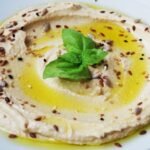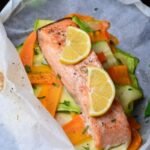Choosing the Right Type of Salmon
When it comes to mastering how to cook salmon, the first step is selecting the right type. Salmon is broadly categorized into two main groups: Atlantic and Pacific. Each type has distinctive characteristics that influence not just the cooking process, but also the flavor, texture, and nutritional content of your dishes.
Atlantic salmon, predominantly farm-raised, is known for its mild flavor and high-fat content, which contributes to its buttery texture and rich taste. This variety is often more readily available, but it is essential to consider the sustainability practices of the farms. Farm-raised salmon can raise concerns regarding environmental impact and potential chemical exposure. Conversely, Pacific salmon, which includes species like Sockeye, Coho, and King, is generally considered a healthier and more sustainable choice if sourced correctly. These wild-caught varieties offer a more robust flavor profile and varying fat content, with Sockeye being particularly rich in omega-3 fatty acids.
When shopping for salmon, freshness is key. Look for fish that has a vibrant pink or orange color; dull or pale fillets may indicate age. Fresh salmon should have a clean, ocean-like aroma. Avoid any salmon with a strong fishy smell, as this can suggest spoilage. The flesh should feel firm and spring back when pressed, indicating that the fish is not overly soft or mushy.
Additionally, consider the type of cooking method you plan to use and how that relates to the salmon’s characteristics. For instance, grilling or pan-searing works well with fattier cuts, while poaching might suit leaner varieties better. Deciding between wild-caught or farm-raised salmon also has implications for both health and environmental impact that should guide your selection process. By making an informed choice about the type of salmon, you’ll be well-equipped to enhance your culinary experience.
Essential Cooking Techniques for Salmon
Cooking salmon can be achieved through several effective techniques, each yielding distinct textures and flavors. Understanding these methods is paramount for anyone wanting to master how to cook salmon properly.
One popular method is grilling, which imparts a delightful smoky flavor to the fish. To grill salmon, preheat the grill to medium-high heat and brush the salmon with oil to prevent sticking. The ideal cooking time generally ranges from 6 to 8 minutes per side, depending on the thickness. However, caution must be taken, as overcooking can lead to dryness.
Baking is another excellent technique, particularly for beginners. By placing the salmon in a preheated oven at 375°F, it typically requires around 12-15 minutes of baking, depending on thickness. Covering the fish with foil can help retain moisture, enhancing the final result. However, one should avoid overbaking to prevent a dry texture.
Broiling salmon provides a faster cooking option, suitable for those who enjoy a slightly charred flavor. Position the salmon on a broiling pan and set the oven 6 inches from the heating element at high heat, allowing for a cooking time of about 6 to 8 minutes. Monitoring the fish closely is essential to prevent burning.
For a more delicate approach, pan-searing is recommended. This technique allows for a crispy exterior while preserving the moist texture inside. Heat oil in a pan over medium-high heat before adding the salmon, cooking for approximately 4-5 minutes on each side. It is advisable to check the internal temperature, aiming for around 145°F for optimal doneness.
Lastly, poaching offers an excellent alternative for retaining the salmon’s moisture. This method involves simmering the fish gently in liquid such as broth or wine for about 10-15 minutes. Care should be taken to maintain low heat to ensure a tender result without compromising textural quality.
Each of these methods presents its advantages and potential pitfalls; thus, selecting the right technique can significantly enhance your culinary experience when learning how to cook salmon.
How Long to Cook Salmon in the Air Fryer
How Long Does Cooked Salmon Last in the Fridge? Your Ultimate Guide to Freshness and Safety
Flavoring and Seasoning Your Salmon
The flavor profile of salmon is rich and versatile, making it an excellent candidate for a variety of seasonings and flavorings. When considering how to cook salmon, one of the first steps is to select the right herbs and spices that will enhance the fish’s natural taste without overwhelming it. Classic pairings include dill and lemon, which offer a fresh and bright complement to the savory qualities of salmon. The acidity of lemon works particularly well to lift the flavors, creating a balanced dish.
For those interested in more adventurous flavor profiles, teriyaki sauce, a mix of soy sauce, mirin, and sugar, adds a unique sweet and salty character to the salmon. Alternatively, a spicy chili rub can introduce a kick that contrasts nicely with the fish’s fatty texture. It is essential to find that delicate balance when seasoning; you want to amplify the salmon’s flavor rather than mask it entirely. Over-seasoning can easily lead to a dish where the natural taste of salmon is lost.
When marinating or seasoning salmon, consider the timing of your flavor application. A brief marinade—ranging from 15 minutes to 1 hour—can impart a delightful flavor. However, if using a more potent ingredient like soy sauce or vinegar, it is advisable to limit the marinating time to prevent the salmon from becoming too salty or mushy. Another option is to apply dry rubs or spices directly before cooking. This method allows the salmon to develop a flavorful crust while remaining moist inside.
Ultimately, experimentation is key. As you refine your approach to how to cook salmon, try various combinations to discover unexpected yet satisfying flavor profiles that cater to your taste preferences.
Serving Suggestions and Pairings
When it comes to serving salmon, there are numerous ways to elevate the dining experience. The rich, buttery flavor of salmon pairs beautifully with a variety of side dishes, grains, and vegetables. One excellent option is to serve salmon alongside quinoa or farro, both of which provide a hearty texture and nutty flavor that complement the fish perfectly. Additionally, roasted vegetables such as asparagus, broccoli, or Brussels sprouts add color and nutrients, enhancing the overall meal.
For those looking to create a vibrant plate, consider a salad with mixed greens, cherry tomatoes, and a light lemon vinaigrette. This not only adds freshness to the dish but also balances the richness of the salmon. A well-prepared grain bowl with salmon as the centerpiece can also provide a nutritious and visually appealing presentation, with layered ingredients offering both texture and flavor.
When it comes to sauces, a dill sauce or a tangy citrus glaze can beautifully enhance the flavor of cooked salmon. These options provide a refreshing contrast to the fish’s natural taste and add an extra layer of sophistication to the meal. For a touch of elegance, consider presenting the salmon on a bed of sautéed spinach or spiralized vegetables, making the dish visually stunning for guests.
To create a full meal with salmon as the star, consider pairing it with side dishes that highlight seasonal produce. A side of wild rice pilaf enriched with herbs can elevate the dish’s flavor profile, while seasonal fruits, like mango or peach salsa, can provide a sweet contrast. Furthermore, when selecting a wine to complement salmon, a crisp white wine like Sauvignon Blanc or a light-bodied Pinot Noir can beautifully enhance the dining experience, making every bite a delightful combination of flavors.
Ultimately, the presentation is crucial. Use elegant plating techniques, such as plating the salmon on a diagonal angle, garnishing with fresh herbs, or arranging colorful vegetables artistically. By considering these serving suggestions and pairings, you can create a delightful and unforgettable meal focused on how to cook salmon.
How Long to Cook Salmon in the Air Fryer
How Long Does Cooked Salmon Last in the Fridge? Your Ultimate Guide to Freshness and Safety


